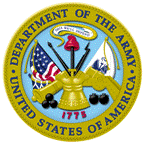U.S. Department of Defense
Document Type
Article
Date of this Version
2011
Citation
FROM: Leadership in Dangerous Situations : A Handbook for the Armed Forces, Emergency Services, and First Responders. Edited by Patrick J. Sweeney, Michael D. Matthews, and Paul B. Lester (Annapolis: Naval Institute Press, 2011).
Abstract
To protect soldiers repairing a vehicle on a road, a platoon leader in Iraq provided protection for them by positioning two manned vehicles along possible routes that other vehicles, potentially laden with explosives, could use. In doing so, he decided not to follow the platoon's standard operating procedure (SOP), which called for controlling traffic along the road by separating nonthreatening Iraqi vehicles from suspicious ones. He believed that he was being"paid to exercise judgment," so he broke from routine. Because he knew the enemy had used snipers against soldiers on this road in the past, he calculated that the risk of them doing so again far outweighed the potential of firing on nonthreatening Iraqi vehicles because of a failure to control the traffic.
Soon after getting their vehicles in position, the soldiers saw a sedan speeding toward their position. As it got closer, the platoon leader ordered one of his soldiers to fire a warning shot, after which the sedan sped up. Thinking they were in imminent danger, the soldiers trained their fire on the sedan and braced for an explosion. The sedan skidded to a stop less than five meters from the soldiers, and they soon discovered that they had killed an elderly man with thick glasses and hearing aids in both ears. When the battalion executive officer reviewed the platoon's actions, he agreed with the lieutenant's decision to deviate from routine and not put soldiers on the road, affirmed that the soldiers "did the right thing," and called the killing of the elderly man a "terrible tragedy of war."


Comments
US government work